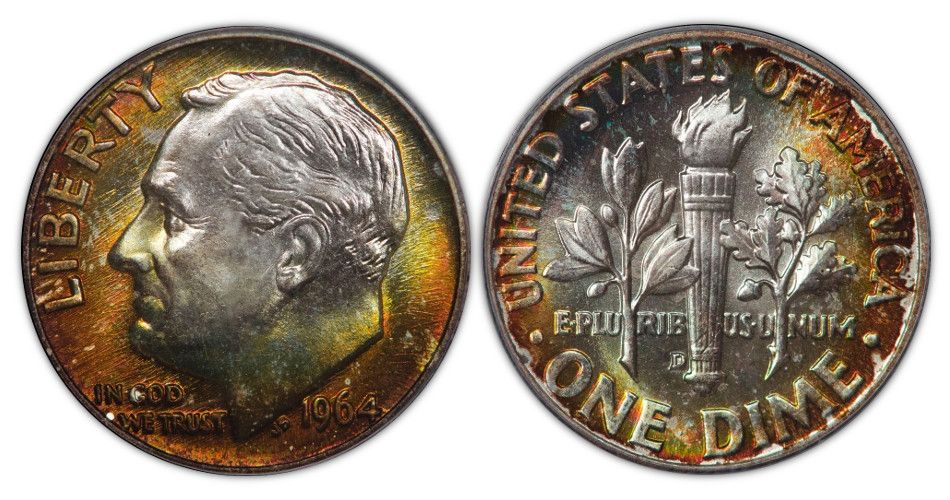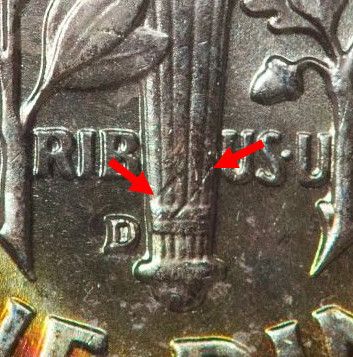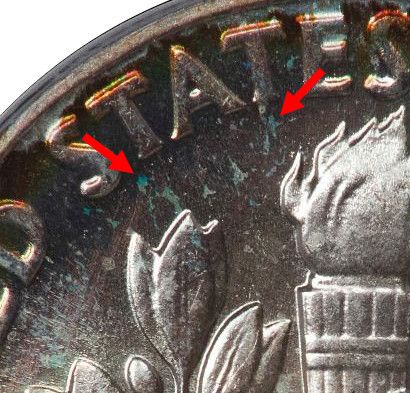-
When you click on links to various merchants on this site and make a purchase, this can result in this site earning a commission. Affiliate programs and affiliations include, but are not limited to, the eBay Partner Network.
-
Posts
4,876 -
Joined
-
Last visited
-
Days Won
7
Content Type
Profiles
Forums
NGC Journals
Gallery
Events
Store
Downloads
Posts posted by coinman1794
-
-
Thanks for the information, Chris and Conder101! I did see the $75 digital D&H available, but it does sound like it is nothing but a remix of the 1910 original. I don't know if D&H contains the type of information I need. I'm seeking information on Proof Conders; i.e., how they can be differentiated from business strikes, whether anyone referenced them in the early days (1790s-early 1800s), and whether they are really Proofs, at all. If you remember any specific sections of D&H that mention Proofs, or any other books, let me know! Yarm has added some recommendations in another thread.
-
On 1/29/2018 at 10:40 PM, Yarm said:
Try this site for several sections of D&H. https://issuu.com/landsum/docs/sti
SOHO produced quite a few tokens in proof and these are often mentioned in Doty's "The SOHO Mint and the Industrialization of Money". For fans of Genuine Trade Tokens within the Conders, Jon Lusk has produced the text "British and Irish Tradesmen and their Copper Tokens". R.C. Bell also produced a series of 5 or so books on various groups within the Conder series that show up on Ebay now and then . I'm not aware of internet versions of these books however. If you are not a member of the Conder Token Collectors Club, join for a modest fee and get access to the club's journal extending back over many years.
Both the PCGS and NGC pop reports break out tokens in proof if you want to get an idea what's out there.
Good luck!
Thanks for the information, Yarm! I will have to look over some of these books for information on Proof Conders; i.e., how they can be differentiated from business strikes, whether anyone referenced them in the early days (1790s-early 1800s), and whether they are really Proofs, at all. If you remember any specific books or sections I could zero in on, let me know! It sounds like Doty's "The SOHO Mint and the Industrialization of Money" is the place to start.
-
Does anyone know the best way to access the complete D&H reference for Conder tokens, i.e., is there a printed book available and/or is the complete book available online somewhere? Also, are there any good references on Conder tokens besides D&H? In particular, I am seeking information on Proof Conder tokens as well. Thanks!
-
Does anyone know the best way to access the complete D&H reference for Conder tokens, i.e., is there a printed book available and/or is the complete book available online? Also, are there any good references on Conder tokens besides D&H? Thanks!
-
On 5/20/2014 at 11:37 AM, thebeav said:
Yes....
You can even purchase hand-held units today for about 12 G's....
Paul
I'm almost certain this is what is used by NGC. They have stated that the process is harmless and can actually be done through the slab, if necessary. I've seen these devices as cheap as 10k!
-
On 2/5/2017 at 1:20 PM, reid1836 said:
Point in case , There is currently a nice PCGS graded 1916 -D Mercury dime VF-25 being
auctioned by Great Collections. Compare it to a nice 1916 -D that I purchased a few yrs ago that was graded by ANACS as F-12. I have provided photos of mine. I feel mine was under graded by ANACS and the aforementioned PCGS example is over graded . To which I would have given a grade of VF-20 to VF-25 to my coin and a grade of F-15 to the PCGS example. But that's just my non - expert opinion !
I like VF 30 on the pictured coin.
-
- Popular Post
-
Great find, Jason!
It's about time one of these turned up. The 1951-S BTW has been found in full PL, after all.
-
-
Also, the A B C thing has been going on with dealers for many years..
Yes, CAC has merely created a third party mechanism to separate what are, in there opinion, the A and B coins from the C coins. This is something dealers have been doing all along.
-
Unfortunately, this is a very low-quality, cast replica.
-
If collectors are comparing/competing for best sets, then I see no monetary aspect at all. The "competition" is for quality, completeness and visual appeal.
If the competition was truly for quality, completeness, and visual appeal; and not about slabs; I wouldn't have to keep turning people in for stealing the serial numbers off my inventory

-
It's a PITA to me. I don't significantly use the PCGS Registry specifically because they don't accept NGC coins. All of my coins are on the NGC Registry, and of those roughly 2/3 are in PCGS slabs. I have a long way to go on my Type Set, and I strongly suspect I'll be buying coins in both major TPG's slabs.
As the saying goes, I buy the coin and not the holder, and NGC slabs have plenty of well graded coins (of which I feel ZERO need to reslab them in PCGS plastic, although I may send in the more valuable ones for CAC before selling them).
ARGGGHHHHH!!!
What I think is implied in Mark's statement is that NGC slabs are cracked out, sent for crossover to PCGS, and re-entered in the NGC registry at a higher grade. I accept his reasoning and their decision to granfather older PCGS coins already in the registry. This I think will effectively level the playing field between the two registries. It will also cause an NGC registry participant to submit raw and crossover coins to NGC for grading rather than to PCGS for later entry into NGC's registry. This then is a business decision that makes perfect sense.Gary
While I have made thousands of dollars off of getting NGC slabbed coins to upgrade over at PCGS, I think the majority (or at least a large minority) of higher valued coins that are slabbed at NGC will not cross at grade at PCGS, much less upgrade. You are welcome to prove me wrong by taking a representative selection (NOT a handpicked selection) and attempting to crossover.
It seems to me that IN GENERAL a higher value coin is worth more in a PCGS slab than in an NGC slab. Are there people who crack PCGS slabs and send them to NGC for crossover? Sure! However, IMO, the vast majority of crack outs are from people attempting to go from NGC to PCGS slabs.
The PCGS value gap is what drives the crackouts, causing dealers to screen NGC coins into PCGS slabs. It would not be fair to judge a random sample of NGC coins for their ability to make the same grade at PCGS, unless it could be assured that they hadn't already been picked over.
-
I tracked 23 items in Signature auction 1240 without placing a bid. I see that 12 of these that sold are now offered for sale by owner. This is a common occurrence for the kind of material I want. So it does make me wonder if I would be bidding against the house. Even if these were real winning bids I understand that I would be bidding against people that are auction junkie dealers that maybe don't ever even see these coins they won - they just re-sell their coins and the shippers address could be Dallas Texas.
All coins purchased in Heritage auctions will be marked as accepting offers, unless the winning bidder has turned off this website feature in their My Heritage account.
-
BRG ... I am not 100% understanding you.... are you saying coins like RD, RB and BN cents should all have the same coin number?
Wondercoin
Yes, why not? NGC doesn't give them separate numbers -- but they track the designations in a separate field in their databases. For example, a 1912 matte proof Lincoln Cent is what it is regardless of the color designation. The coin number should designate the coin, and the (color, DCAM, PL, FB, FH, etc.) designations should be tracked in a separate field. This is Database Design 101...
NGC does not have "coin numbers" in quite the same way that PCGS does. However, I have found that they do have unique identifiers in their registry. While they designate all deserving coins as PL, the Registry keys are not usually updated. About 90% of my set has had to be manually entered (which isn't a problem, given NGC's superlative customer service). I enter the coin, it gives me an error message, and within a day (or two, at the most) NGC has added my coin to the registry. Ali E and Dena have been exceptional at helping me build my set.
So, the idea that "it's too much work" for PCGS is, honestly, wildly_fanciful_statement.
I personally find the whole PL and DPL designations on moderns to be a highly subjective micro-niche of collecting, so I couldn't give two hoots about it. I also often find suppose "PL" business strike coins to be very visually unattractive. But, there are a few who care and like that thing. To each his/her own.
The trick is finding Prooflike moderns than are visually attractive! Many modern issues from the 1960s onward, are plagued by planchet irregularities like tumbling marks; or strike-thru errors, usually from lint or grease. These flaws are especially prevalent on Prooflike surfaces.
Also, standards for the (non-Morgan Dollar) PL designation have become much stricter over time, and anything graded in the past decade falls under the tightest standards. There are times when older slabs emerge where the PL designation is questionable under todays standards. Collectors should be aware of these coins and use common sense when buying a Prooflike coin. Only the deepest mirrors are given a PL designation today, and once in a blue moon, a DPL comes along.
-
Be that as it may, tumbling, bumbling, mumbling marks or whatever. Thems serious gouges on a common coin with 10s of millions extant. Why would anyone pay $10K for it beyond me. If graders have the capability to know how each mark on a coin is made, and then grade high if tumbled marks, low if post made marks, well then, they must be psychic.........
Best, HT
First, tumbling marks are not damage, they are an integral part of the coin and have flow lines running through them, imparted at the moment of striking. The graders will have no trouble distinguishing them from abrasions.
Second, while the presence of mint-made flaws might not affect the technical grade in many cases, it typically does affect the value.
As an analogy, take the ancient coin market. If you have two slabbed anchient coins of the same type and in the same grade, but one is off-center and one is not, the coin that is off-center will sell for much less than that which is properly centered.
-
"If the luster is unbroken, as you have said, they are definitely mint made, and should not affect the grade."
So, when considering eye appeal, the graders ignore these tumbling marks?
In most cases, tumbling marks are completely ignored. They are part of the coin as it was struck.
-
Rod Serling just appeared in my office and is now beginning his prologue for this week's episode of The Twilight Zone. Everything is in black and white - my entire office and the world outside of my office window.
The smoke from his cigarette hangs thick in the air, twisting around him like a ghostly serpent and, as the room begins to spin around me, I hear him say something about a message board and what he describes as "....a most unusual poster...." and I begin to
I actually just read that today, Wednesday, is official Twilight Zone Day.
-
They may actually be digs in the planchet that still show up after striking. Now that I look at the pictures a second time, they more closely resemble the latter than they do strike-thru indents. The jagged edges and fissure-like appearance indicate that metal tried to close them in when the dies made contact, but failed to completely erase them. If the luster is unbroken, as you have said, they are definitely mint made, and should not affect the grade. These are often referred to as "tumbling marks," and are caused by planchets banging together while being tumbled around with steel beads as part of the preparation. They are most commonly seen on Ike dollars. Even the deepest tumbling marks will seem to disappear at certain angles, due to the presence of metal flow going through them.
The coin below shows both bag marks and tumbling marks. The red arrow shows the jagged, inverted edge on a large, deep tumbling mark that tried to close during striking. The blue arrow shows bag marks that scraped the surface and moved metal away.
The roughness above the tumbling mark is a mixture of other, smaller tumbling marks and grease strike-thru roughness.
-
How does a Roosevelt Dime with two huge hits/scrapes across the torch on the reverse grade MS68 FB? Is that active PVC on the reverse towards the top of the torch?
Kenny, these were my exact same thoughts.
This is a blatant example of a little color massively inflating the grade of an otherwise truly pedestrian coin. The gashes on the fasces on the reverse would bring this coin down to an MS66 IMO. And, the color isn't even that great. I have NO idea how this got into an MS68FB holder. Is this really the best surviving example of the 1.3 billion minted? I'm also not convinced that "green stuff" on the upper reverse is toning -- looks like active PVC to me.



The "gashes" are probably strike-thru imprints. That is the only possibly way this could grade higher than MS65. The bands appear to be very weak. Otherwise, the coin looks nice, except for the residue, which may or may not be PVC.
-
Cotton swabs will not scratch the coins if used gently, as stated above; but if loose debris (especially metallic dust) gets caught in the fibers, it can scratch the surface as you rub it over the coin.
-
Acetone will not remove any toning, unless of course it's not really toning.
-
-
I noticed the same problem in the newly released Medals census. The reports are missing some pieces that I have handled or actually own.













Post your most recent acquisition: Ancients
in US, World, and Ancient Coins
Posted
This appears to be a Roman Bronze Sestertius of Emperor Galba (68-69 AD).